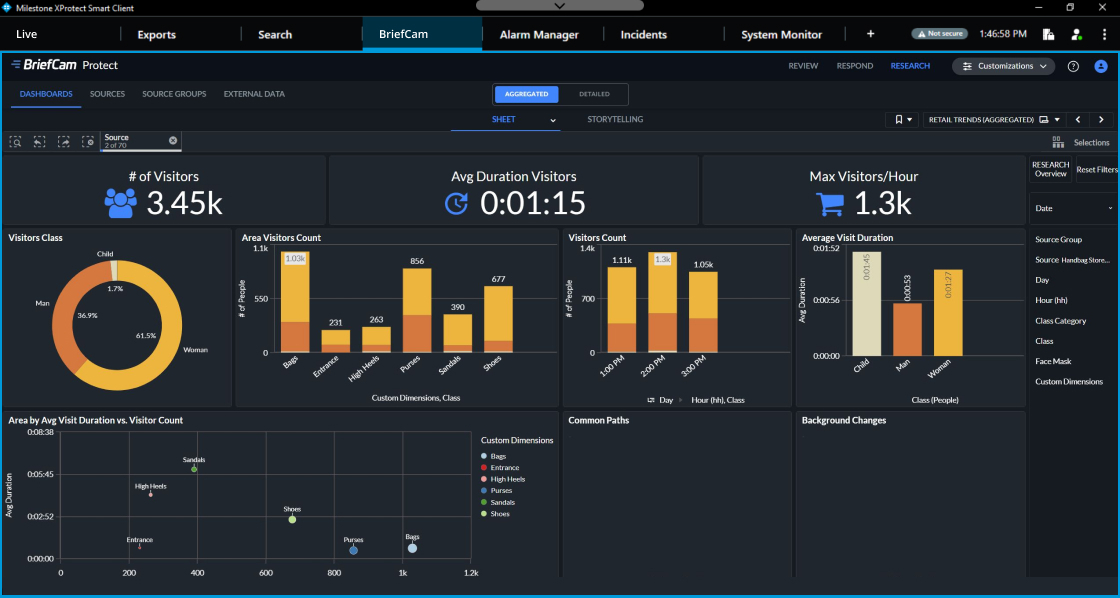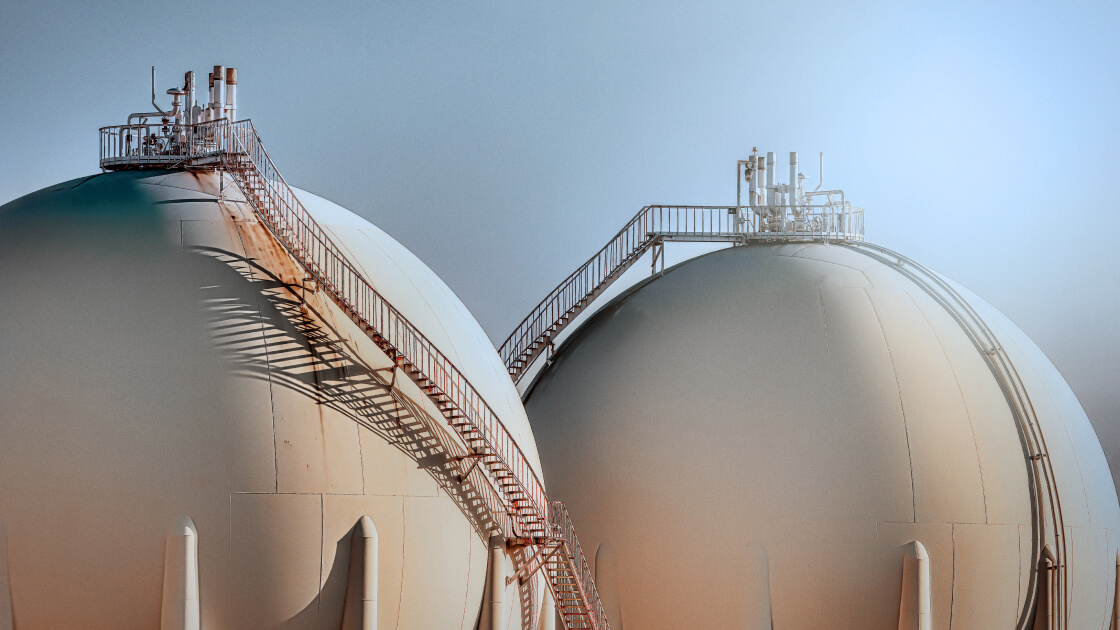47,000 – Current vacant nursing positions in the UK
450,000 – Potential nurse availability deficit in the US by 2025.
15,000,000 – Expected global shortage of health professionals by 2030.
The numbers don’t lie. Wherever you look, there are not enough nurses. And, with aging populations and increased healthcare needs around the world, the problem is only projected to get worse.
We know that staff shortages in healthcare can have a profound impact on patient care. With fewer healthcare staff available and an increased workload for existing staff, patient care can become compromised. It can also affect hospital operations, causing disruptions in workflows, increased stress and burnout among staff, and potential risks to patient safety.
Video can help secure medical assets
So how can hospitals react to a looming healthcare resource crisis? They will have to make the resources they have reach ever further. And data-driven video technology can help.
From video security all the way through to remote patient monitoring and AI capabilities, the potential for video technology to help hospitals is immense.
This article will delve into some of the ways hospitals are deploying video to keep patients safe, automate certain routine tasks, and free up time for nurses, so they can still provide the human touch for patients.
Protection is a key component of care. Ensuring a secure and safe environment in hospitals, therefore, is paramount. That is the area that video technology has traditionally been able to help with; the everyday challenges in a hospital that are nonetheless vital to patient safety.
These may include:
1. Monitoring entrances and exits or key transport infrastructure such as parking lots and helipads
2. Detecting unauthorized access and preventing the theft of medical equipment or medication
3. Identifying potential security threats to patients
4. Preventing aggression towards staff
Other safety issues video could also help with might be less expected. For example, connecting video technology with air-quality sensors could help detect dangerous substances or viruses and ensure optimal indoor air quality. In another scenario, combining wander alarm bracelets with video could help identify a confused patient wandering the hospital corridors and prevent them from putting themselves at risk.
Video technology will still always be watched by trained medical staff
One of the key challenges nurses face today is maintaining optimal nurse-patient ratios. Some patients, such as those in Intensive Care Units (ICUs), require 1:1, 24/7 observation. Enter remote patient monitoring.
Remote patient monitoring uses video technology (always watched by trained medical personnel) to keep an eye on several patients at once. This way, Heads of Nursing can alleviate their teams’ workloads.
Some remote patient monitoring software can also have embedded functionalities that improve communication and collaboration among healthcare teams.
Patient falls in hospitals are deemed the most serious safety risk at a hospital. In the US alone, between 700,000 and 1,000,000 hospitalized patients fall each year.
These falls can mean further injury, further healthcare requirements and, if a patient suffers a fall when no one is watching or when nurses are busy elsewhere, it can prove fatal. It’s also a costly risk. One study in the US found that the average total cost of a fall was $62,521.
And that’s where Artificial Intelligence (AI) can come in. With high accuracy, AI fall detection technology can rapidly alert staff when it identifies patient falls, so they can react quickly.
This allows healthcare providers to intervene quickly, reducing the risk of injury and ensuring timely medical assistance. Secondly, it helps in reducing the workload of nurses by automating fall detection, eliminating the need for constant monitoring or minimizing patient room visits to check-in with the patients. This frees up their time, enabling them to focus on other critical hands-on tasks.
Nurses are now able to communicate with patients at the touch of a button
In-person patient interactions are a crucial part of a nurse’s job. These in-patient visits are what differentiates clinical treatment with patient care. But they also increase infection risk and require more resources.
However, with the advent of video technology, healthcare providers can now leverage remote patient engagement to overcome some of these hurdles and still deliver personal care to patients.
With cameras and two-way audio, nurses can observe patients and communicate with them remotely whenever they wish to. This could be to tell them to stay in bed if they are attempting to leave it, or simply to check how they are. During the COVID-19 pandemic, when reducing in-person visits was essential for infection control, this remote communication proved to be invaluable.
Video technology can also play a significant role in improving the safety of mental health patients and staff. Mental health conditions often require continuous monitoring and support. With video technology, healthcare providers can, for example, alert security personnel when a patient has become a danger to themselves or others.
In this new era of digital health, protecting patient privacy and data security must be put front and center. To do this, hospitals should implement robust encryption protocols and secure data storage to safeguard sensitive patient information. It is crucial that hospitals ensure compliance with the relevant data protection regulations, such as HIPAA in the United States.
Effective use of remote patient monitoring technology hinges on the proper training of healthcare professionals. It's essential to provide comprehensive training to doctors, nurses, and support staff to ensure they can confidently use the video technology and have programs in place on best-practice procedures in case of incidents.
Hospitals also need to encourage adoption among their staff. Demonstrating the benefits of remote monitoring, such as more efficient use of staff resources, increased patient engagement and higher quality patient care, will be crucial to the uptake. So too will ensuring that the technology is user-friendly and integrated seamlessly into their existing workflows.
Healthcare organizations are increasingly recognizing video technology will be needed to meet changing healthcare needs in a cost-effective way. NHS England’s ‘Long Term Workforce Plan’ (June 2023), sets out how remote patient monitoring and AI can help improve productivity and care levels.
And it’s not just an idea for the future. Hospitals are already implementing the technology to streamline processes, enhance communication among healthcare professionals and automate routine tasks, all freeing up valuable time for healthcare staff to provide high quality care.
On top of Milestone XProtect® — our proven video management software (VMS) that’s used to keep hospitals all around the world safe and secure — we have created an extension to support medical staff in their work.
XProtect® Hospital Assist is a remote patient monitoring solution that frees up time and resources in the hospital so nurses and doctors can deliver high-quality patient care.
Among its features are:
- Automatic, AI-driven fall detection alarms, allowing staff to rapidly respond and aid the fallen patient
- A Privacy Blur function, which allows patient privacy when medical observation is not required. Hospital Assist can also be configured so live video is not recorded.
- Live video combined with two-way audio communication so medical staff can engage with patients remotely
- In-video Sticky Notes to help healthcare professionals coordinate between them by, for example, documenting important patient data and alleviating problems with handovers of staff shifts
Hands-on care will forever be a key component of nursing
While data-driven video technology can bring undeniable benefits to healthcare, it is essential to remember that it can never be a substitute for the human touch of healthcare professionals. The compassion, empathy, and personalized care provided by medical staff are irreplaceable.
Technology should, rather, be seen as a valuable tool that complements and enhances the work of healthcare professionals. It can
Striking a balance between technology and hands-on care is crucial to ensure the best possible outcomes for patients.
Discover how XProtect Hospital Assist can help ease resource pains throughout your hospital here.

